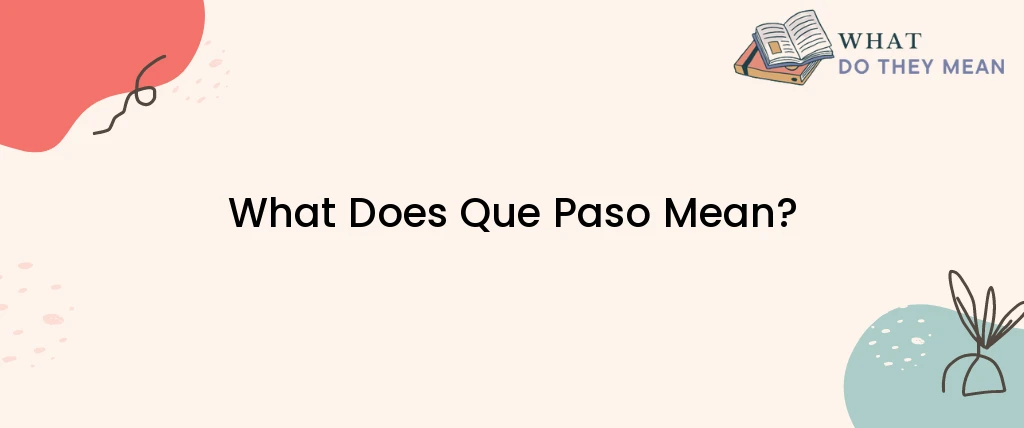“Que paso” is a popular Spanish phrase that is often used in casual conversations to mean “What happened?” or “What’s up?” in English. It’s a versatile phrase that can be used in a variety of situations, from greeting someone to asking about recent events. In this article, we’ll take a closer look at the meaning of “que paso” and how it is used in different contexts.
The Meaning of “Que Paso”
As mentioned earlier, “que paso” translates to “what happened” or “what’s up” in English. It’s a common phrase that is used to start a conversation, especially when you want to ask someone about their day or recent events. It’s also used to inquire about someone’s well-being or to express concern if something seems wrong.
How “Que Paso” is Used in Conversation
In conversation, “que paso” is often used as a casual greeting to ask someone how they’re doing. For example, if you see a friend on the street, you might say “Hola, que paso?” to ask them how they’re doing. Similarly, if you’re calling someone on the phone, you might start the conversation with “Hola, que paso?” to ask them what’s been going on in their life.
“Que paso” can also be used to inquire about recent events or to express concern if something seems wrong. For example, if you hear that someone you know has been sick, you might ask “Que paso? Estas bien?” which means “What happened? Are you okay?” In this context, the phrase is used to express empathy and concern for the other person.
Variations of “Que Paso”
There are several variations of “que paso” that are commonly used in different Spanish-speaking countries. For example, in Mexico, the phrase “que onda” is often used instead of “que paso.” This phrase has a similar meaning and is also used as a casual greeting to ask someone how they’re doing.
In some parts of Latin America, the phrase “que tal” is used instead of “que paso.” This phrase is also used as a greeting and has a similar meaning to “que paso” and “que onda.” It can also be used to ask for someone’s opinion or to express surprise.
Using “Que Paso” in Context
To use “que paso” in context, it’s important to understand the situation and the relationship between the speakers. In casual situations, “que paso” can be used as a friendly greeting to start a conversation. However, in more formal situations, it may be more appropriate to use a different greeting or to start the conversation with a different phrase.
It’s also important to understand the cultural context in which “que paso” is being used. In some cultures, it may be considered impolite to ask about someone’s personal life or to inquire about recent events. In these situations, it may be better to use a more neutral greeting or to simply ask how the other person is doing.
Conclusion
“Que paso” is a versatile phrase that is commonly used in Spanish-speaking countries. It can be used as a casual greeting, to ask about recent events, or to express concern for someone’s well-being. While variations of the phrase are used in different countries, the basic meaning remains the same. To use “que paso” effectively, it’s important to understand the situation and cultural context in which it is being used.

As a researcher, I am curious and driven by the pursuit of knowledge. I approach my work with a critical eye, carefully evaluating sources and methods to ensure that my findings are accurate and reliable. Whether delving into scientific studies, historical records, or cutting-edge technologies, I am always seeking to expand my understanding and make new discoveries. I am dedicated to uncovering new insights and finding solutions to complex problems, and am driven by a passion for uncovering the truth.

